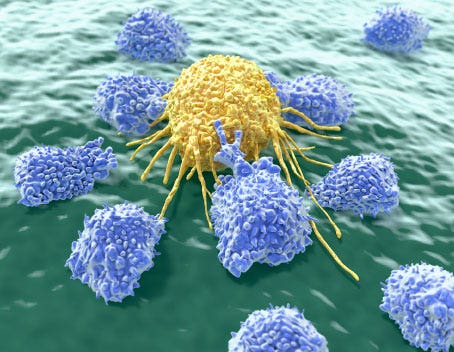
Hit-and-Run Programming with TriLink mRNA
September 2017
Immune cell therapy has become a hot field, partially due to recent advancements in gene editing technologies and therapeutic delivery systems. These advancements improve immune cell therapy through a number of factors, including improved patient safety through greater control of gene expression and/or increased feasibility through ease of manufacturing.
Published last month in Nature Communications, researchers from University of Washington and Fred Hutchinson Cancer Research Center reported on a technology that improved both the safety and the feasibility of gene editing.
In this article, they describe a simple approach to the targeted delivery and transient expression of gene editing mRNA, a method they describe as hit-and-run programming. Specifically, they envelope TriLink custom mRNA in polymeric nanoparticles coupled with a cell-targeting molecule and then incubate the mRNA-containing nanoparticles with the target cell.
"This platform does not add complexity to manufacturing because it involves no special equipment or training. Thus, it can substantially streamline the manufacture of cell-based therapies at clinical scales, which means that treating patients with genetically engineered cells could become less expensive, and more effective as a disease-fighting intervention," the authors note.

Although the clustered regularly-interspaced short palindromic repeats (CRISPR)/ CRISPR-associated protein 9 (Cas9) system has captivated headlines for the past couple years, the authors used the gene editing technology megaTALs, which are highly specific single-chain rare-cleaving nucleases in which the DNA binding region of a transcription activator-like (TAL) effector is used to recruit a site-specific meganuclease directly adjacent to the genomic target site.
And while some immune therapies require long-term expression for curative effects, this constant expression often has negative consequences, such as increased probability for malignant tumor growth and general cellular toxicity. Once more, many diseases benefit long term from the transient expression of gene altering molecule, which is why the authors used mRNA in their "hit and run" approach.
To test their system, the authors first showed that the nanoparticle delivery platform and megaTAL nuclease system is capable of disrupting expression of T-cell receptors in lymphocytes, which is a well-studied strategy for engineering the desired immune cell phenotype. Importantly, they also demonstrated that the transfected cells were viable and retained adequate proliferative activity, which is important for clinical feasibility.
Next, the group demonstrated that their technology can improve antitumor activities in T cells long term. They did this by introducing mRNA that encodes a critical transcription factor for memory formation, and showed that even after multiple rounds of stimulation and expansion, the cells displayed the key phenotype for 8 and 20 days after delivery of the mRNA.
Finally, the researchers demonstrated that the mRNA-nanoparticle platform was sufficient to induce enhanced self-renewal properties in hematopoietic stem cells. Impressively, by assessing expansion, the group reported an increased ability to form multi-lineage colonies by ~30% by introducing mRNA that encodes self-renewal genes.
Though the technology is still likely to undergo modifications to enhance the system, the improved safety profile and ease of manufacturing have the potential to shape the immune therapy field.
Featured Products: Custom TriLink mRNA, Reporter mRNA. Please contact us to discuss your custom project. We offer microgram to gram quantities of mRNA and GMP-grade options for early-phase therapeutic manufacturing.
Have a question? Visit Ask An Expert.

